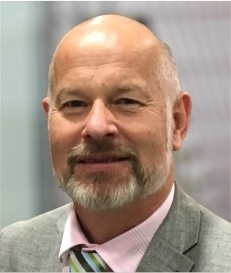Keith Scoles

This post is written by Keith Scoles, owner of PowerIt Fwd. Keith has over 40 years of experience in the energy sector in New Zealand and abroad – leading the engineering development of community scale solar projects in Afghanistan, Indonesia and throughout the Pacific. Keith has recently been recognised for his expertise and experience after being nominated to become a Fellow of the internationally recognised UK-based Energy Institute. This places Keith amongst the leaders in the industry in whose experience, depth of knowledge and expertise is driving the industry forward. Keith and Community Energy Network (CEN) are partners in wanting to establish community energy as a thriving sector in New Zealand Aotearoa.
If New Zealand’s energy industry was a bear, it’s time to wake him up from hibernation and give him something to feed on. Because the sector is ready for a complete evolution. While revolutions can be started in a day, they may only be a temporary fix, if they do not address the underlying issues. Evolutions are changes that tend to be more enduring.
That is why we need the major players in the industry to change their perspective and come to the party to address energy hardship. I applaud the efforts of Community Energy Network (CEN) in raising the issues around energy hardship and their input into frameworks to wake the bear.
Because it’s time the bear was fully awake!
To understand why, we need to ‘wake the bear’, we need to go back 132 years to the beginning of electricity in this country. On August 4, 1888 in Reefton – a small settlement on the South Island’s West Coast – the first electricity supply began. From then until the early 1990s, New Zealand’s approach to electricity was predominantly about community – locally owned generation and transmission that was distributed to the community.
In the 1990s, sudden change took place. Revolution was afoot! Instead of community energy, the government of the day chose to roll out the commercially driven, market-led model that we now see dominating Aotearoa’s energy sector (often to the detriment of the New Zealand public).
While the reason for change was real, with generation, transmission and distribution needing an overhaul. Only some parts of the sector became more successful from the commercial focus, while others lost their way.
When revolution is driven internally it can sometimes be a good thing but where it is forced from external stakeholders, its seen to be an invasion. What occurred in the energy sector at that time shifted the ethos from being a dedicated resource committed to the wellbeing of all New Zealanders, to a somewhat disaffected resource.
In fact, many of the key issues that we are grappling with in New Zealand’s energy sector today had their roots in the early 1990s shift. They are:
- A move away from a centralised strategic industry approach to owning and managing our electricity assets through separate ownership structures and separate business drivers not necessarily focused on the wellbeing of New Zealanders but instead profit.
- A shift by distribution companies from a community approach to one that increases revenue streams for cash-constrained councils who want to supplement funds to keep rates rises as low as possible.
- A reduction in collaboration between industry technical experts as companies vie to protect their market positions. This has resulted in fragmented knowledge of the electricity system and an erosion of overall industry knowledge.
- An aging workforce with large gaps in knowledge and training opportunities that allow for retaining in-depth wider industry skill.
- Leading industry-related, government-supported organisations engage mainly with executives and don’t involve technical expertise in addressing some harder issues in the industry.
At the time, the view was that change was forced on the industry via the politics of the time. Since then, the rapid shift to a market-led model has done nothing to improve affordability of electricity for kiwis. More concerningly, not only is there very little to manage price control in parts of the industry, there is pretty much no opportunity to limit the ability by some to exercise a degree of profiteering.
Meanwhile, other parts of the industry have captured customers, with no competition and therefore do not need to implement good business practices around decision-making because of this lack of competition.
That is why an evolution in our energy sector is necessary.
In my view, it must come from within the industry. However, this is unlikely to change without some pressure being applied.
While the industry has remained largely unchanged with a simple focus on ‘poles and wires’ for over 100 years, rapid shifts in technology and engineering should be a catalyst for change.
Yet many are still reliant on the way things have always been done.
With commercial regulation being prioritized over utilities, it has caused an environment to blossom that has lost connection with seeing their communities as partners. Throwing occasional funds at communities that are struggling isn’t the answer either.
So then, how can the energy sector move to evolution?
My observations across many sectors are that the corporate environment focused on financial benefit and little social interaction is in decline and today’s focus is moving to social capital. Those who focus on balancing decisions that benefit planet, profit, people and legacy will be the standout successes of the future.
Certainly, those who are making this shift in mindset are ahead of the game and those who haven’t started with community engagement will be left behind.
Communities, social enterprise and corporates can benefit what each other bring to the table but they need to be able to sit together and get solutions to difficult problems tabled first. From there, it’s about prioritising key outcomes and objectives and genuinely moving toward them (rather than just talking about them, going home and forgetting about it).
To tackle energy hardship, there is a need to aim at the heart of communities. Finding out what people really want is key.
There are considerable opportunities for communities to create community energy initiatives and share benefits with their neighbours. Unfortunately, that view is currently siloed and communities don’t have a reference point. Therefore, the technical thinking isn’t necessarily being applied to driving forward initiatives.
The CEN and Power It Forward (PIF) partnership is about realising opportunities to enable what the future holds. Our focus is to weave the line between the parties to get them talking and assisting with the social and technical transition to community owned and operated energy systems that can pass some benefit back the community.
We believe there are smart technical solutions to achieving community energy. All we have to do is change the thinking in how we view the systems. All parties involved will benefit from that.
We also have a technical view and appreciation as to what works and what doesn’t. This can be achieved through systems that are accurately modelled and scoped and that are designed for the customer who in turn know what they are getting and how it can be delivered.
We also need utilities to realise that it cant be engineering egos that drive our utility mindsets and appreciate that factory-based engineering (without a vision for community related outcomes) is no longer sustainable. In turn, a new direction requires some dedication beyond our business as usual model. It’s not something to shoehorn into our existing model or play around with on the fringes. This is a new model that requires the determination to grapple with what it means as a new and focused part of our industry. If we are too busy we will simply end up being too late and not ready for the changes that are here now or will inevitably come.
Personally, I have seen working within a mindset for community reinvigorates engineering passion for what I and others do . In that journey there are opportunities for communities to be involved from the project inception to the implementation journey. After all, isn’t that what engineering should be about …. people not things!




